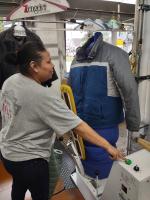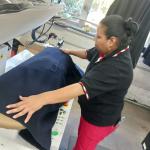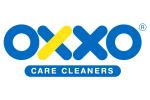CHICAGO — Dry cleaners are no strangers to charity work, with many making sure that a culture of caring and outreach are part of the fabric of their company. While this obviously benefits their communities, it can also have an impact on the cleaner’s team members for the better.
In Part 1 of this series, we explored some of the ways that dry cleaners can provide needed services to those in their community. In Part 2, we examined what this work can mean for the cleaner’s company and team atmosphere. Today, we’ll conclude by looking at how cleaners can mix charitable efforts into their workflow, and where they can find ideas for outreach.
Working It In
While doing pro bono work for the community brings benefits, it can’t come at the cost of profitability for the business. Ken Sandy, managing partner of Dryy Garment Care in the Washington, D.C., area, believes that part of this balancing act comes in taking an honest look at the company’s capabilities and capacities.
“Of course, it’s a priority to make money and be able to keep the doors open,” he says. “There are times when the charity volume just has to take a second seat. I communicate that to our organizations. I don’t over-commit on deadlines when I can’t do them.”
Another part of the ability to do charity work is to simply factor it into the total workload of the business.
“It’s not really a challenge,” says Kimberly Wilkinson, owner of four Lapels Dry Cleaning locations in the Marshfield and Hanover, Mass., area. “Lapels has created such a workable system operationally, that when we have large pieces of business that come in, such as something of a charity nature, we’re able to prioritize it, and put it where it needs to be.”
Determining what is urgent and what can wait is key to this prioritization.
“An organization needing costumes or uniforms cleaned, for instance, generally knows their needs well in advance, so we’ll have the opportunity to have their things cleaned and ready to go,” Wilkinson says. “Those things come with a manageable timetable. For uniform cleaning and storage at the end of a season, they don’t need it for another six months, so we’ve got time. It doesn’t really put any strain on our production schedule.”
After doing programs for years, there’s no substitute for experience, says Tom Zengeler, president of Zengeler Cleaners, headquartered in the Chicago suburb of Elk Grove Village.
“We’ve been doing those two major programs for so long that it’s very well-managed, and we just have to tweak it every year,” he says. “We’ve got specific schedules with high schools that are collecting dresses, and we’ll pick them up on one of the drivers’ slower days, when we have an opportunity where we’re not overburdening the staff.”
Listen to Your Community
So, for cleaners who want to get involved with their communities, where’s the best place to start?
Wilkinson says it all starts with simply listening: “Get to know your customers. Start talking to them in short bursts — two- or three-minute conversations — and you can learn a lot. Get to know them and listen and the opportunities will present themselves.”
Sandy agrees with Wilkinson, adding that the most important step is simply to start.
“Just look around — it’s there. It’s there,” he says. “Start from within first. Create some culture in your business. You can start with a smaller interdisciplinary team and go do small things. Show up at a golf tournament. Sponsor a highway. Just get your brand out there and demonstrate that’s what you’re built on. And then, opportunities will just start showing up.”
This outreach will not only help the community now, Sandy says, but will enable the neighborhood to become healthier, which helps both business and citizens.
“I think, in the future, all truly successful companies will have to have some sort of philanthropic component,” he says. “Vibrant communities create happiness. It helps people find their identity.”
“There are larger needs than I ever really thought there were out there,” Wilkinson says, “so there are larger opportunities to help.”
Looking Forward
Wilkinson says that, for cleaners wanting to pitch in, the initial effort to start a philanthropic program will be rewarded in time.
“Don’t be afraid to give away service,” she says. “It always comes back to you in full, and you will make it up in the long run. I think it’s one of the fastest ways to grow your business, in terms of visibility and from a marketing standpoint, and it comes at a low cost. Dry cleaning is about service, and if you keep that as your focal point, the rest will come. Be of service and your business will naturally grow.”
And, not only will it help a business grow, it also has rewards for the dry cleaner’s team and those around them. Zengeler notes that he has four children, now in their 20s, who all donate their time and efforts for various needs.
“Getting involved with these programs is rewarding for my employees, for my family, and for the whole company,” he says. “It makes your culture so much stronger when you are able to do that.”
For Part 1 of this series, click HERE. For Part 2, click HERE.
Have a question or comment? E-mail our editor Dave Davis at [email protected].


























